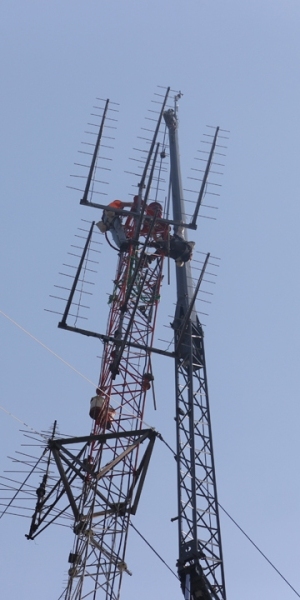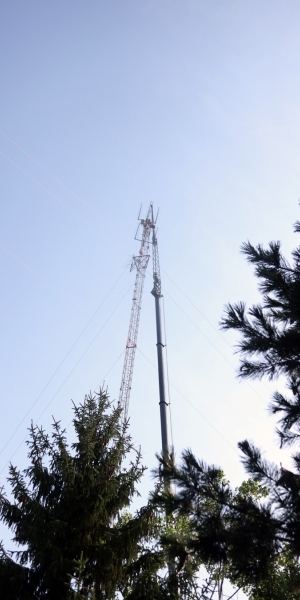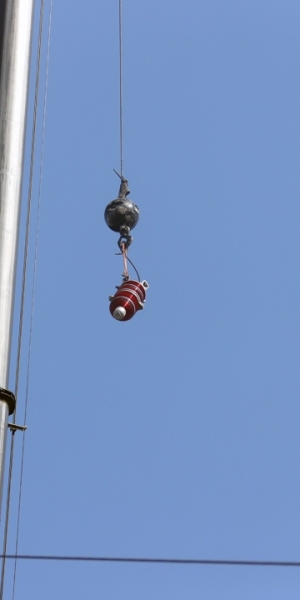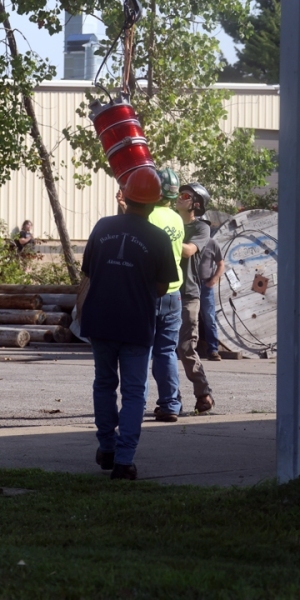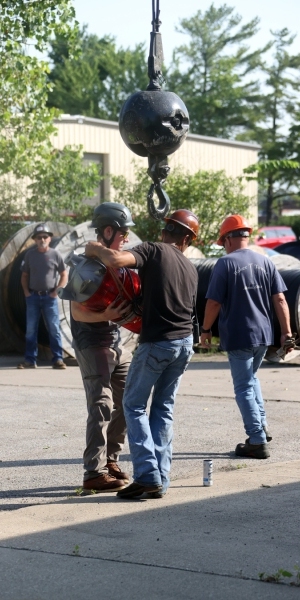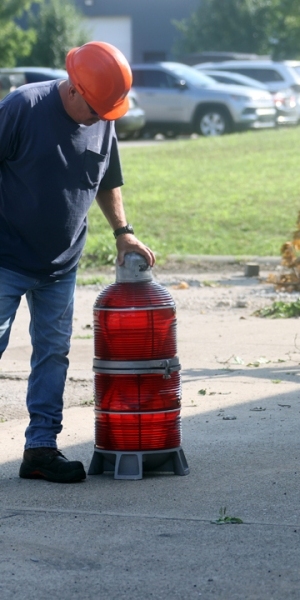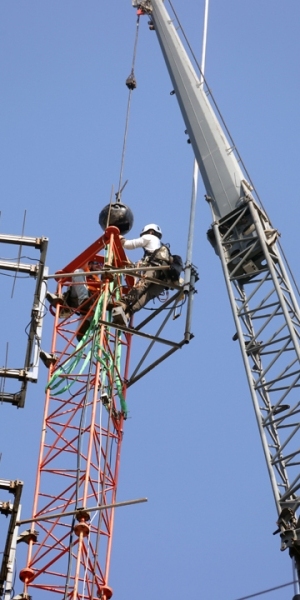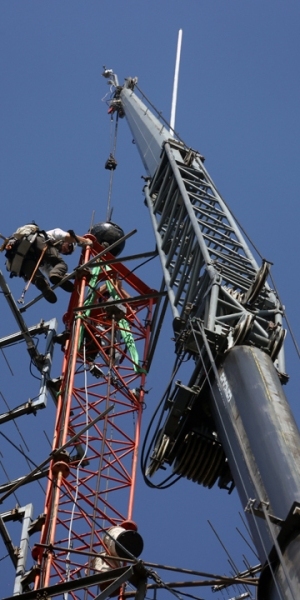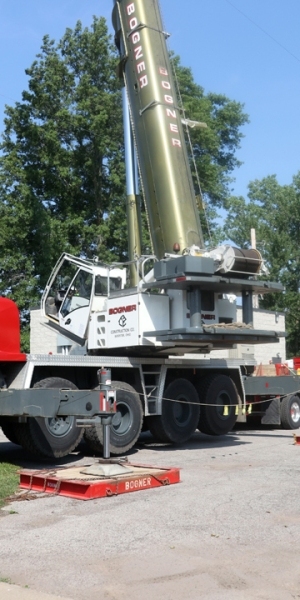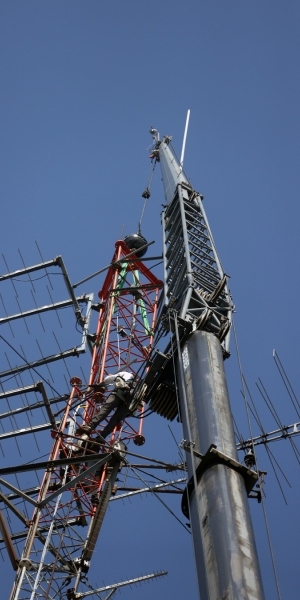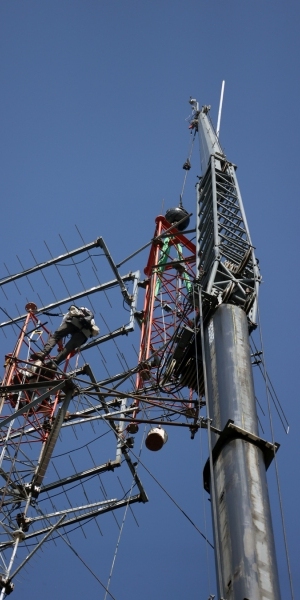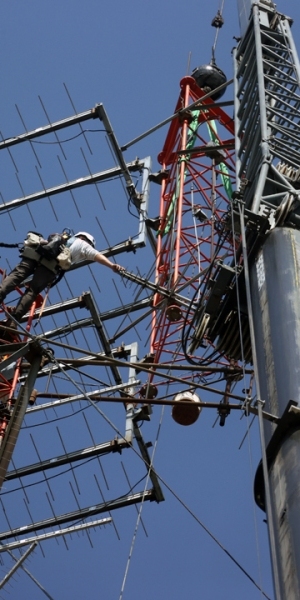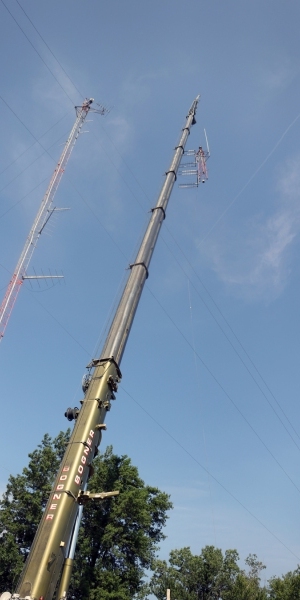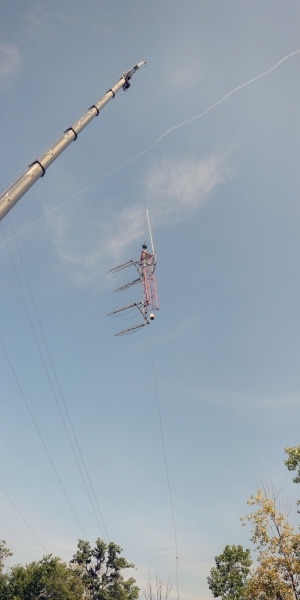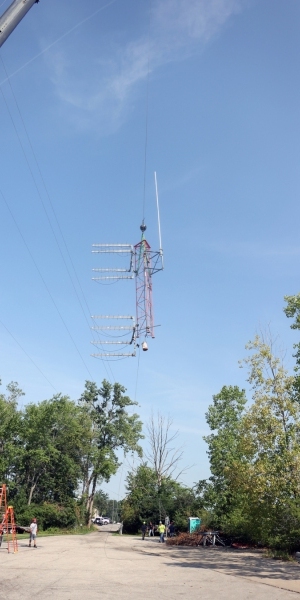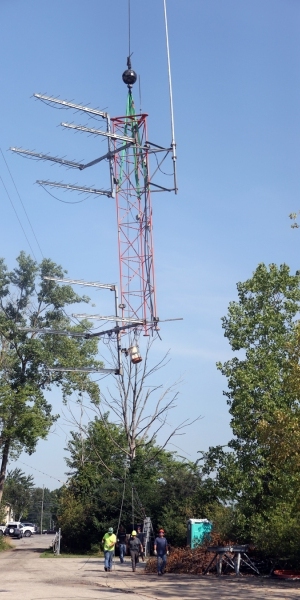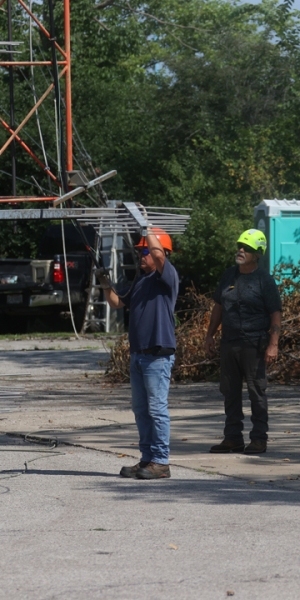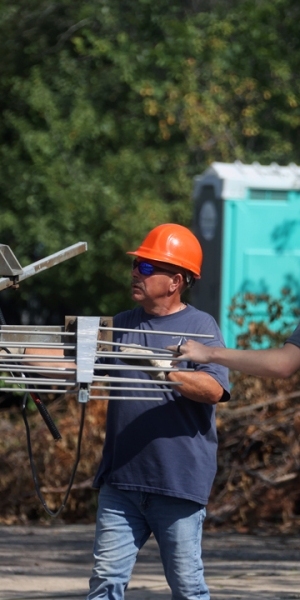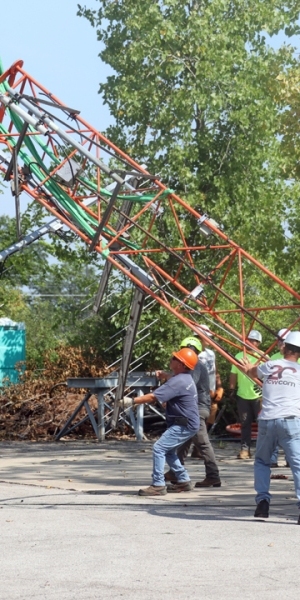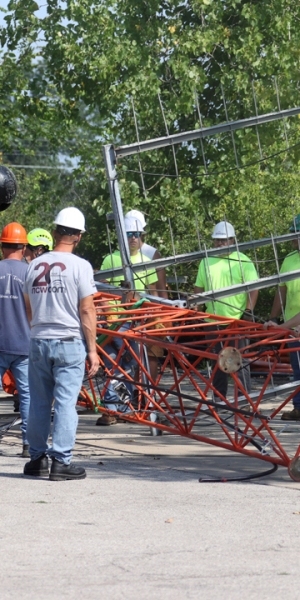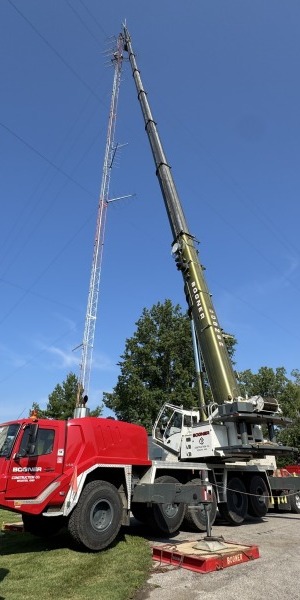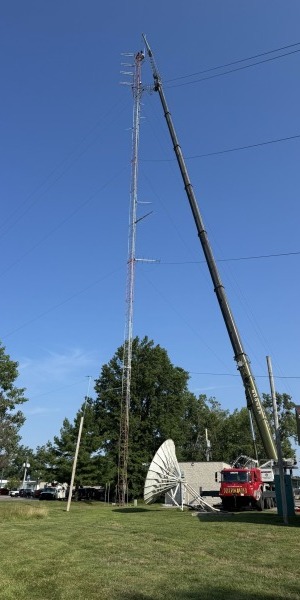End of an Era: Armstrong Cable Retires 240-Foot Tower
ASHLAND, OHIO — For nearly three decades, a towering steel sentinel stood watch over Claremont Avenue—an icon of an earlier age in broadcasting and telecommunications. But on Wednesday a sunny day in Ashland, workers methodically began dismantling the 240-foot antenna tower that once relayed television signals for Armstrong Cable, marking the end of its 28-year reign.
Located behind Caliber Collision at 2143 Claremont Avenue, the tower was originally constructed in 1997, a time when antennas and satellite dishes dominated the communication landscape. Today, however, it stands as a relic of an industry transformed by the rapid rise of fiber optic technology.
“We don’t use the tower anymore,” said Michael Edwards, a nearly 40-year veteran with Armstrong. “All of our signals now come via fiber, fed from our super headend in Pennsylvania. Twenty or thirty years ago, this was the backbone of our signal delivery system—but not anymore.”
Despite being functionally obsolete, the tower still came with a hefty price tag just to keep standing. Registered with the FCC, the structure required an annual inspection and constant maintenance to comply with federal regulations. That included aviation safety lighting, which alone could cost $1,000 just to replace a bulb—requiring specialized technicians certified in tower climbing and OSHA-compliant safety standards.
“It was running us about $10,000 a year just for inspections,” Edwards explained. “We couldn’t even change the bulbs ourselves—it had to be a professional team.”
A Historic Shift in Communication
To understand the significance of this tower’s removal, it helps to understand the legacy of antenna towers in American communications. Long before the digital age, towering steel lattice structures like this one were critical for radio and TV broadcasting, telecommunications, and emergency communication services. The history stretches back to the early 20th century when towers enabled coast-to-coast AM radio broadcasts and, later, the golden age of television in the 1950s.
Towers like Armstrong’s were typically outfitted with massive antennas or satellite dishes, receiving signals from networks or satellites and transmitting them over-the-air or through cable lines. However, with the arrival of fiber optics—capable of transmitting massive amounts of data at lightning-fast speeds—many legacy towers became economically unviable.
“The industry has changed,” said Marty Baker of Baker Tower in Akron, the company contracted for the dismantling. “This tower was originally used for off-air reception—pulling in TV signals via antenna. Now everything is satellite-fed or fiber-fed, and you just don’t need these towers for that purpose anymore.”
Not the End for Towers—Just This One
Despite the changes, Baker doesn’t believe towers are going away entirely.
“Towers are still very viable,” he said. “We work on cell towers, do some broadcast work, a bit of everything. The industry’s moved more into maintenance now—lights, antennas, dishes—and it’s regulated tightly. OSHA requires full safety harnesses, shock-absorbing lanyards, constant tie-offs. It’s no longer a cowboy industry.”
Baker’s team planned to remove the tower in a single day, section by 20-foot section. Without access to original blueprints, they proceeded cautiously, starting with the top piece as a test weight. Though it appeared small from the ground, the steel structure was built with solid legs—each section potentially weighing over a thousand pounds.
“This thing is solid steel,” Baker said. “It’s not just scaffolding. It takes real skill and experience to take something like this down safely.”
According to Armstrong Cable General Manager Mitch Piskur, taking the tower down was a practical and financial decision.
“It pays for itself in just over two years,” Piskur noted. “When you consider the cost of inspections, bulb changes, and ongoing maintenance for a tower we no longer use—it just makes sense.”
A Specialty Job in a Niche Industry
Piskur said Armstrong sought competitive bids for the job but found that only a handful of companies—fewer than three within a 300-mile radius—were qualified for such a highly specialized task.
“It’s definitely not a job just anyone can do,” he said. “We’ve worked with Baker Tower before and they’ve done a great job. We’re confident in their ability.”
As the crane swung into position and the tower’s top section was hoisted into the air, onlookers couldn’t help but feel a sense of nostalgia. For years, the tower loomed large on Ashland’s skyline—a quiet fixture in the background of daily life. Now, it fades into history, a symbol of just how far communication has come.

